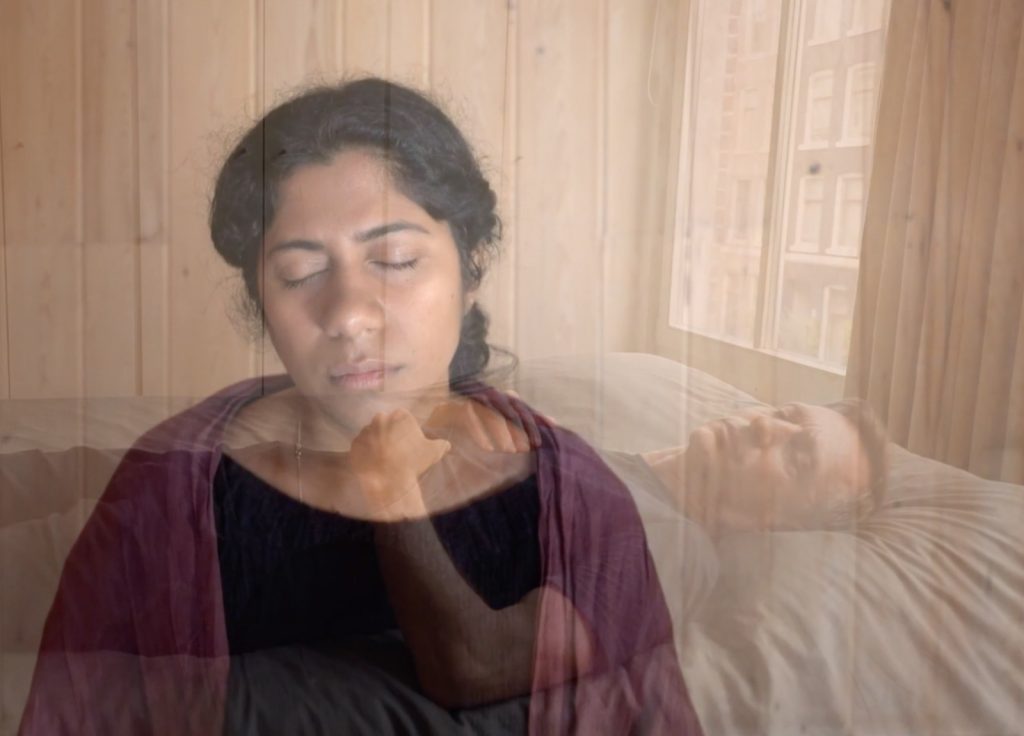No director of opera or theater has been more tenacious, brilliant, and courageous than Peter Sellars in finding the nexus between the deepest, most intractable problems of our times and the classical culture we have inherited. In his extensive international career, he has staged Handel, Mozart, Wagner, many contemporary operas, and Bach oratorios and passions as well as Greek tragedies and Shakespearean dramas. Each production has been a way to address such issues as the corruption of ruling classes, the refugee crisis, the search for faith, and resistance to totalitarianism. For Sellars, culture is not an assemblage of high-status objects and entertainments but the core of how and what we cultivate socially. It is how we find beauty, harmony, and healing amid humanity’s most dire conflicts.
This Body Is So Impermanent
Directed by Peter Sellars
US, 2021, 79 mins.
In his latest work, the moving film This Body Is So Impermanent, Peter Sellars brings to life two essential paragraphs from the second chapter of the Vimalakirti Sutra. Sellars has long been contemplating and working with this profound Mahayana Buddhist text, and his film was inspired specifically by the fear, isolation, and intensified sense of mortality provoked by the COVID-19 pandemic. And as we all know, this pandemic has brought about something unique: more than was ever before possible, we are sharing our solitary suffering and apprehensions with everyone everywhere on Earth.
So the film begins with Sellars asking: “What are we learning from this time of COVID, and what do we take forward now from this period in our lives?” Out of this question has come a film, itself a kind of meditation, wherein Sellars brings us into the reality of impermanence and the possibility of awakening, two essential topics in the text. It is a sutra unique in the Buddhist canon because the teacher, Vimalakirti, is not a buddha or bodhisattva but simply a devout businessman, a realized layperson. He has fallen gravely ill, and the teachings he gives are a direct expression of his experience. The film presents first Vimalakirti’s description of our transitory body and then the paths whereby we might find liberation.
The film is a collaboration between Sellars and three artists. Zoom, a prominent communication tool during the pandemic, has made this possible. Ganavya, a South Indian devotional singer, chants and sings the words. Simultaneously, the master calligrapher Wang Dongling writes out the text in vigorous flowing script, and dancer and choreographer Michael Schumacher improvises movements in response. The three are in disparate locations: Ganavya moves between a simple cabin and the wooded banks of a stream in Oregon; Wang Dongling is in his studio in Hangchou; Michael Shumacher is in his austere apartment in Amsterdam; and Sellars, as director, is in Los Angeles. The tempo throughout is slow, reflective, and the scenes of the artists are carefully interspersed with the sigh of a river, a waterfall, rocky banks, lotuses dying in a pond, an empty apartment, the sounds of rushing water, the faint scratching of brush on paper, footsteps, a gong.
In the first half of the film, the text expands on the temporary nature of the body and its inescapable suffering. Ganavya sings: “This body . . . is like a water bubble, not remaining very long. It is a mirage born from the appetites of the passions. . . . It is like a reflection, being the image of former actions .” The calligraphy slowly emerges. The dancer moves slowly, uncertainly, on a bed.
In the second part of the film, the dancer leaves his bed and moves in unfolding gestures of offering; the calligrapher moves in his studio, and his calligraphy fills a wall while the singer chants:
The body of a Tathagata (awakened one)… is born of morality, of meditation, of wisdom, of the liberations, and of the knowledge and vision of liberation. It is born of love, compassion, joy, and impartiality.
—The Holy Teachings of Vimalakirti, trans. Robert Thurman
As we watch this progression, it may seem at first that the performers are illustrating the words, but soon—and almost imperceptibly—our awareness changes. The dancer’s movements, the calligrapher’s brushwork, the singer’s many inflections come to embody the text. Their human bodies, their environments, the sounds around them, and the sutra merge into a single expression unfolding before and within us.
This is an extraordinary accomplishment. Sellars and his collaborators have embraced the challenge of making a sutra come to life in cyberspace in a new artistic form. They have indeed, as Sellars in a March interview wished, created in this devastating time “a window of acknowledgement, understanding, and empathy.” It is, for us, a transformative experience.
Thank you for subscribing to Tricycle! As a nonprofit, we depend on readers like you to keep Buddhist teachings and practices widely available.
